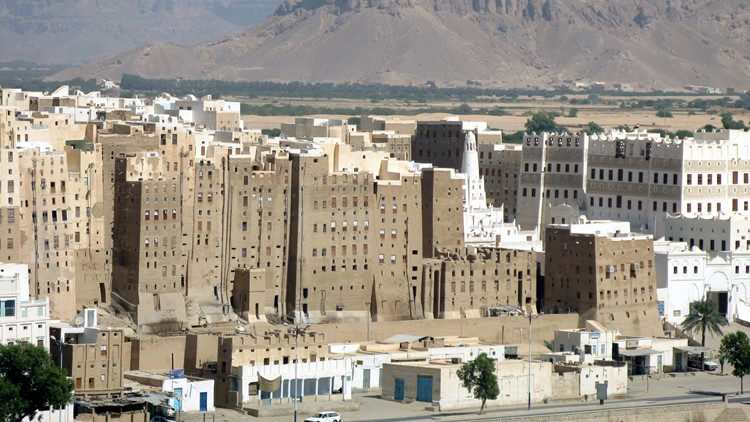This ancient city has seen it all over nearly two millennia. It has survived a bloody civil war in recent years and centuries of baking under a relentless desert sun to go with a history of flooding when it rains. Along with two ancient neighboring cities, it has also, at times, survived abject neglect, which is a feat unto itself given the materials from which the city is largely constructed.
But now it seems the weather may be catching up with it, as there are serious concerns that this timeless metropolis and its neighboring cities could soon collapse from the effects of rain and flooding.
Known as the "Manhattan of the Desert," the city of Shibam in Yemen is home to many famous structures and is estimated to be nearly 1,700 years old, dating all the way back to the pre-Islamic period. It is also known as the first city on Earth to have been constructed with a vertical masterplan in mind. Because of its rich history, Shibam was declared a World Heritage Site by Unesco.
Four-story to eight-story buildings tower throughout the city, construction for which is believed to have begun back in 300 AD. During its heyday, the city became a key hub along the spice and incense trade route, and thus developed a reputation for being a wealthy metropolis.
It was also thought to be fortresslike. The mud-brick buildings gave a sense of safety and were designed as a solution to the vulnerability of being attacked.
Some of the first big buildings to be constructed in Shibam were built around 900. Remnants from these buildings still stand today, including a mosque that was built in 904.
But the city was largely rebuilt in 1532 following severe flooding that crippled the foundation of the ancient city. Shibam is under a constant threat from damage due to rain and flooding because of the mud structures.
The ancient city is strategically built on rocky spur high above the river valley, but that doesn't completely prevent the rain and flooding problem.
Despite the outer walls that were installed in an attempt to protect the buildings, the city could be devastated by floods again very soon.
A tropical cyclone in 2008 caused significant flooding and damage to several structures in Shibam. Foundations of multiple buildings were compromised as a result of the cyclone, with some even collapsing at the time.
This year, torrential rains pounded the region in early May and then again in July, damaging dozens of towers, according to The National, an English-language news organization that covers the Middle East. The damage caused by the extreme weather also prompted renewed calls for conservation of the historic sites.
"The majority of the buildings partially damaged by the recent torrential rain are those located in the southern facade of the historic city. Additionally, the heavy rains caused damage to the roofs of some buildings in the city, causing water leakage into the rooms," Hasan Eidid, Shibam branch manager of the General Organisation for the Preservation of Historic Cities in Yemen, told The National.
Four towers were completely destroyed and 15 others have been damaged from recent floods.
The constant repair of the mud-brick structures is expensive, and upkeep has been limited due to the economic collapse caused by the civil war that's gripped Yemen since 2014.
"Residents of the city have been unable to restore them because of the war and the difficult situation in which they live," Eidid told AFP.
An emergency response plan in cooperation with UNESCO is in progress to help restore 40 buildings at a cost of $194,000 -- in an attempt to save the city, according to AFP.
Despite the donations and planned renovation, restoration has been slow and unpredictable due to a lack of local skilled manpower needed to meet building standards. Shibam is just one of three historical sites that feature mud-brick architecture in the Hadramawt region of Yemen. The other two sites are also under threat from rain and flooding.
One of these sites, Seiyun, located about 12 miles east of Shibam, features The Seiyun Palace, a fabled and majestic structure that, to the eye, appears to be in impeccable condition but is at dire risk of crumbling. It is one of the world's largest mud-brick towers.
The city of Tarim is the other site that's at risk of succumbing to the weather and other elements. Tarim is located roughly 25 miles from Shibam and is known for its 365 mosques.



